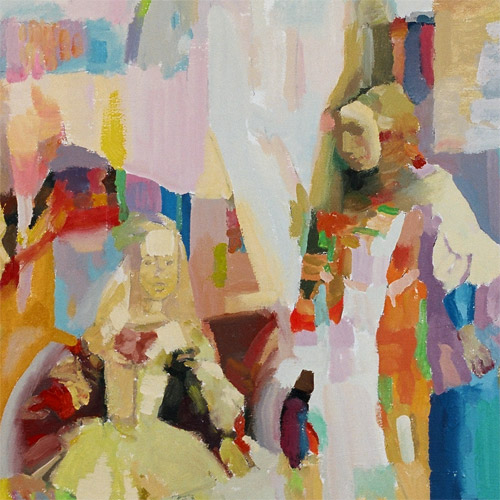Print information
- Artwork printed by EPSON Stylus Pro 7880 (Epson Ultra Chrome K3 Vivid Magenta) on canvas.
- Limited edition prints of 100.
- Each limited edition artwork will be individually printed, signed, dated and numbered by the artist Vladimir Zunuzin.
- Art Prints packaged in a plastic tube.
- © zunuzin.com watermark is only used online and does not appear on your print.
Shipment and payment
- Free worldwide shipping with tracking.
- Will usually ship within 3-5 business days.
- We send prints to all countries via Registered Airmail, they usually arrive within 35 working days to destinations within Western Europe and about 45 working days to destinations outside Europe.
- Payments by Paypal or 2Checkout.
Tags
History of the Las Meninas by Diego Velazquez

Diego Velazquez
"Las Meninas", 1656
Museo del Prado, Madrid
Las Meninas (Spanish for The Maids of Honour) is a 1656 painting by Diego Velázquez, the leading artist of the Spanish Golden Age, in the Museo del Prado in Madrid. The work's complex and enigmatic composition raises questions about reality and illusion, and creates an uncertain relationship between the viewer and the figures depicted. Because of these complexities, Las Meninas has been one of the most widely analysed works in Western painting.
The painting shows a large room in the Madrid palace of King Philip IV of Spain, and presents several figures, most identifiable from the Spanish court, captured, according to some commentators, in a particular moment as if in a snapshot. Some look out of the canvas towards the viewer, while others interact among themselves. The young Infanta Margarita is surrounded by her entourage of maids of honour, chaperone, bodyguard, two dwarfs and a dog. Just behind them, Velázquez portrays himself working at a large canvas.
Velázquez looks outwards, beyond the pictorial space to where a viewer of the painting would stand. In the background there is a mirror that reflects the upper bodies of the king and queen. They appear to be placed outside the picture space in a position similar to that of the viewer, although some scholars have speculated that their image is a reflection from the painting Velázquez is shown working on. Via








